What Is a Guardrail: Components, Standards, and Best-Fit Applications
If a personal fall arrest system isn’t the right fit for your company, how can you protect your workers at height? Guardrail systems might just be what you’re looking to use to make working at height safer for your employees.
“Everyone goes home.”
While it is one of the mantras of the National Fallen Firefighters Foundation and their safety campaigns, “Everyone goes home” easily correlates to fall prevention measures for workers performing their duties at height.
The goal for every employee working at height is to make it home safely at the end of every shift. Mazzella FHS Fall Protection Specialists utilize many different systems to help accomplish this task.
Whether you’re working on scaffolding, rooftops, or walking surfaces, guardrails are an option for fall prevention.
In this article, you’ll learn about the:
- Definition of a guardrail
- Reasons for fall prevention systems
- Standards of governance for guardrails
- Dos and don’ts of guardrail usage
- Best-fit applications
- Bad-fit applications
Why Is It Necessary to Have Fall Prevention Measures?
According to OSHA (Occupational Safety and Health Administration) Publication 2056, there are nearly 6,000 workplace fatalities in the United States and 50,000 deaths due to workplace-related illnesses each year. Also, there are 5.7 million non-fatal workplace injuries, which cost U.S. businesses over $125 billion annually.
Falls are the leading cause of deaths in the construction industry, and most fatalities happen when employees fall from open-sided floors and through floor openings. Falls from as little as 4’ to 6’ can cause long-term time away from work, and in the most severe cases, death, which means all open-sided floors and platforms 6’ or more in height must be guarded.
What Is A Guardrail?
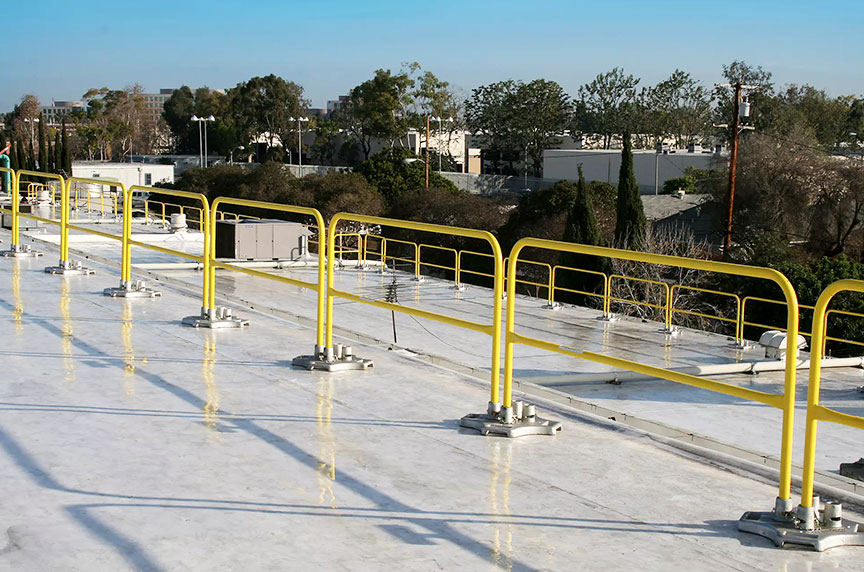
Guardrails serve as passive fall protection in the Hierarchy of Fall Protection. The standard guardrail system features a toprail, intermediate (or mid) rail, and support posts.
To add more layers of protection, screens, mesh, or balusters could be utilized in tandem with the guardrails.
Guardrails need to have a minimum breaking strength of 200 lbs. in any direction per OSHA 1910.29(b)(3)(4)(5). A guardrail consists of a top rail 42” + or – 3” no less than 39”, mid rail at 21” and toe board 3.5” high. Guardrails should be inspected per the manufacturer specifications or a qualified person’s requirements.
Midrails are halfway between toprail and walking / working surface, and must stand up against a downward and outward directional force of at least 150 lbs.
If wire-rope guardrail systems are utilized, highly visible tape or flags must be placed every 6’ to increase visibility.
Toe boards shall be provided when employees below could be exposed to falling objects such as tools. Toe boards shall be at least 3.5” (8.9 cm) in height from top edge to floor level, and be capable of withstanding a force of 50 lbs. (222 N) applied in any direction.
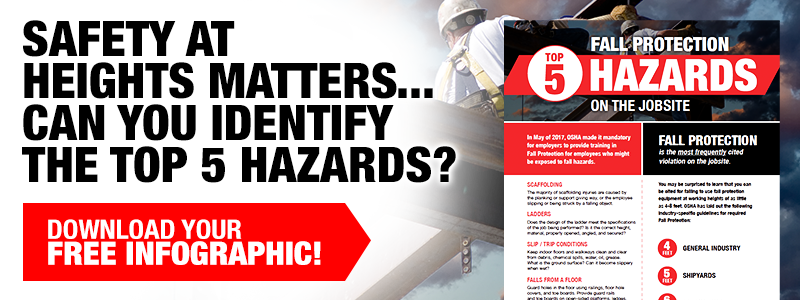
What Are the OSHA Specifications for Guardrails?
Guardrail requirements are listed in the OSHA 1926.451(g)(4) standard.
In this standard, OSHA says: “Guardrail systems shall be installed along all open sides and ends of platforms. Guardrail systems shall be installed before the scaffold is released for use by employees other than erection / dismantling crews.
“The top edge height of toprails or equivalent member on supported scaffolds manufactured or placed in service after January 1, 2000, shall be installed between 38” (0.97 m) and 45” (1.2 m) above the platform surface. The top edge height on supported scaffolds manufactured and placed in service before January 1, 2000, and on all suspended scaffolds where both a guardrail and a personal fall arrest system are required shall be between 36” (0.9 m) and 45” (1.2 m). When conditions warrant, the height of the top edge may exceed the 45” height, provided the guardrail system meets all other criteria of paragraph (g)(4).”
“Shall” is defined as mandatory, according to OSHA 1926.32(q).
When midrails, screens, mesh, intermediate vertical members, solid panels, or equivalent structural members are used, they shall be installed between the top edge of the guardrail system and the scaffold platform.
When midrails are used, they shall be installed at a height approximately midway between the top edge of the guardrail system and the platform surface. When screens and mesh are used, they shall extend from the top edge of the guardrail system to the scaffold platform, and along the entire opening between the supports.
Do’s and Don’ts For Guardrails
OSHA states that guardrails shall be surfaced to prevent injury to an employee from punctures or lacerations, and to prevent snagging of clothing.
According to the standard, steel or plastic banding shouldn’t be used as a toprail or midrail. Also, manila or plastic (or other synthetic rope) being used for toprails or midrails shall be inspected by a competent person as frequently as necessary to ensure that it continues to meet the strength requirements of a minimum 200 lb. capacity.
Cross-bracing is acceptable in place of a midrail when the crossing point of two braces is between 20” and 30” above the work platform or as a toprail when the crossing point of two braces is between 38” and 48” above the work platform. The end points at each upright shall be no more than 48” apart.
What Are Best-Fit Applications for Guardrails?
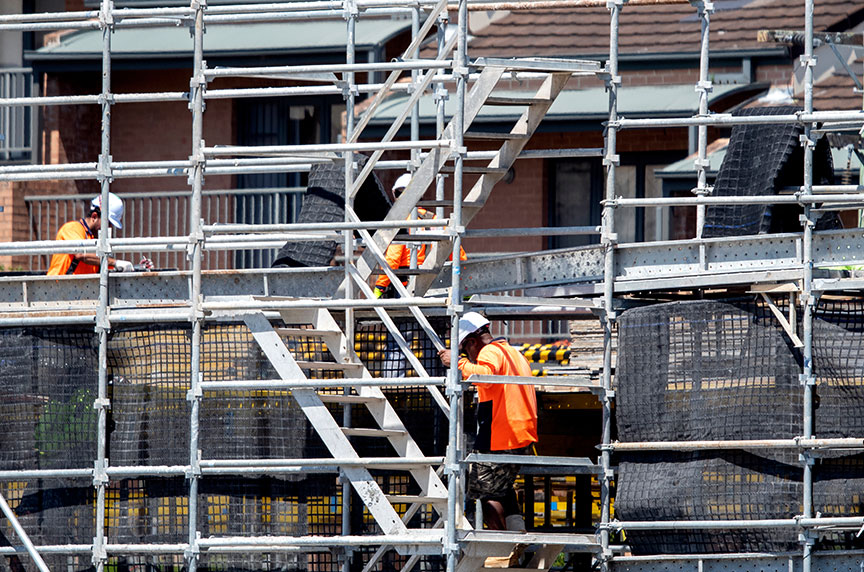
Scaffolds
Guardrails are commonly used for walkways / working areas inside factories, and they are important components of scaffold platforms.
For adequate fall protection while using scaffolds 10’ or more above a lower level working surface, workers must be protected with a personal fall arrest system or guardrail system.
Depending on the type of scaffold being utilized, a guardrail system AND personal fall arrest system may be required.
On scaffolding, guardrails are mandated to be installed along all open ends and sides of the platform before the systems are fit for use.
Like other fixed guardrails, workers on scaffolds must be protected by a toprail, midrail and toe board to prevent objects that are kicked off the deck from falling down and injuring workers on lower levels of projects.
Ladders
When exiting the top of the ladder to climb onto a surface, such as a roof, do you have unguarded edges?
If the answer to that question is yes, fall protection must be maintained. Guardrails or a personal fall arrest system would be your best options.
What Are Bad-Fit Applications for Guardrails?
Scissor Lifts
Scissor lifts are considered a mobile scaffold, and you may be required to wear a personal fall restraint system. However, it is important to remember to connect to the manufacturer’s designed anchorage point. You never want to use a guardrail as an anchor point.
Aerial Work Platforms
Also known as boom lifts or articulating boom lifts, aerial work platforms support workers on an elevated surface. Aerial work platforms allow employees to work freely with both hands and prevent falls, but you always want to wear a full body harness while in use.
The full body harness must be attached with a lanyard to the manufacturer’s designed anchor points.
Suspended Scaffold Systems
If you’re working on a suspended scaffold system, like window washers, having vertical lifelines fixed to the roof or another structural surface would be the preferable option.
How Mazzella Can Help You with Guardrails?
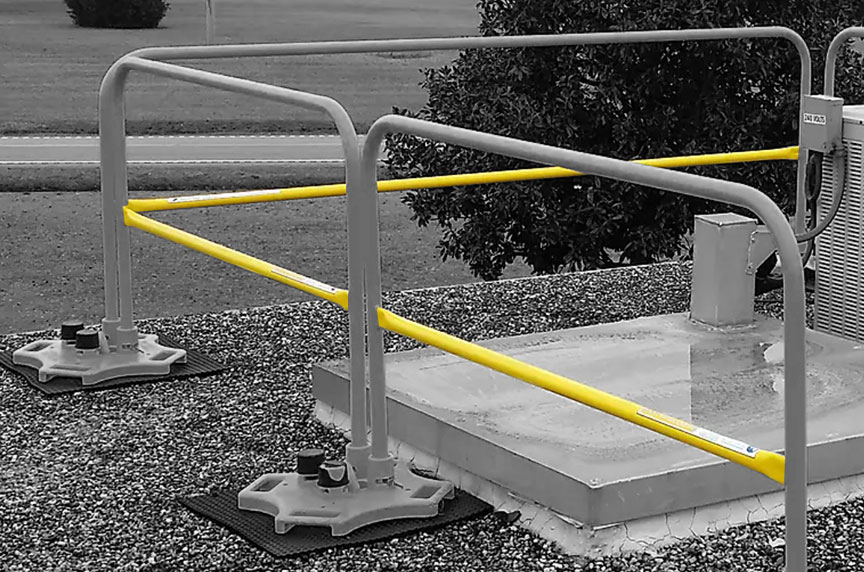
It is important to remember guardrail systems are designed and installed to adhere to ASME and OSHA safety standards.
Guardrails are designed and built to specific safety regulations and should not be modified in any way. If there is damage to a guardrail, the fall prevention system must be repaired promptly. Also, guardrails should not be used as an anchor point for fall protection systems, Should a guardrail section be removed for the delivery of materials, fall protection systems need to be in place.
While considered a fall prevention measure, guardrails are a part of Mazzella’s warehouse solutions division.
Mazzella FHS has designed and implemented material handling and storage solutions for a variety of industries focusing on warehousing and manufacturing applications, and many of those solutions include guardrails. This vast experience has provided us with a deep understanding of our clients’ most challenging requirements.
We are driven by a highly experienced team of experts working closely with our clients to develop the most viable solutions for their needs. Our designers, engineers, sales engineers, and project managers are experienced professionals, and as such, strive daily to provide our products and services to our clients “On-Time and “On-Budget”.
In addition to providing guardrail solutions, Mazzella FHS also offers a full range of services such as site audits and surveys, repairs, full installation services, and fall protection systems.
Call us at 800.362.4601 or click here if you think a guardrail system would be a good option for your company’s fall prevention and / or warehouse solutions needs, or to schedule training for your workers at height!
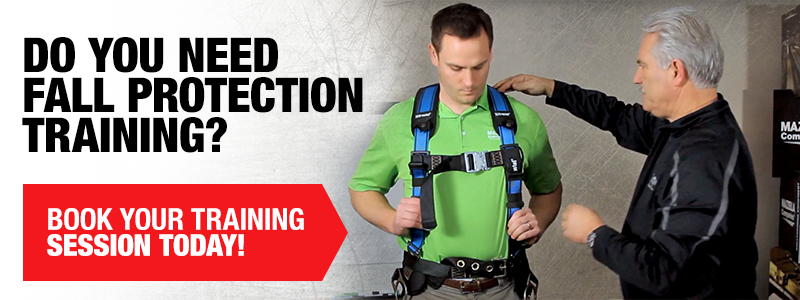

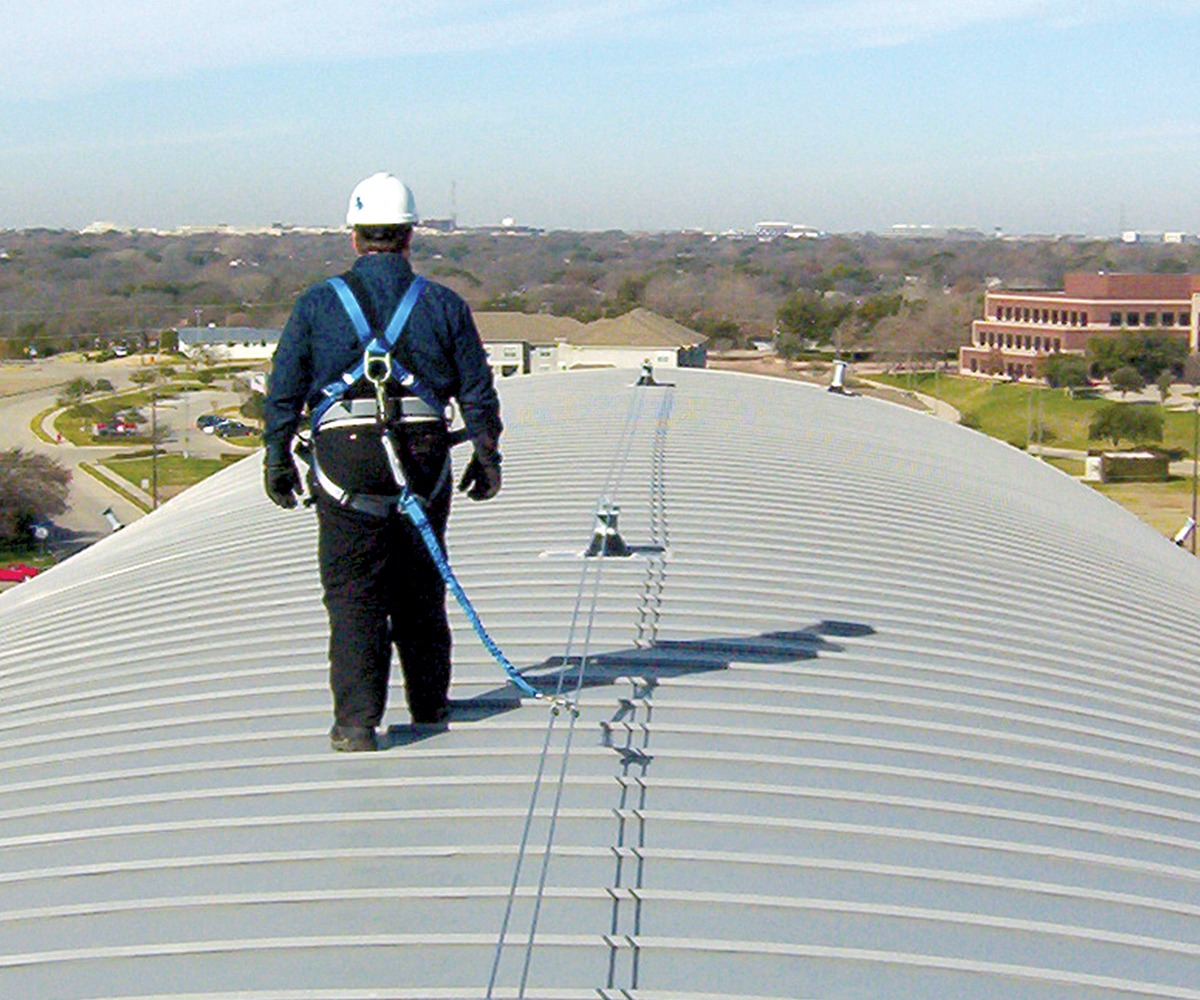
Fall Protection
We are a leading supplier and installer of engineered fall protection systems in the U.S., as well as a distributor of soft goods like harnesses, lanyards, self-retracting lifelines, scaffolding and netting. All of our engineered systems and products meet or exceed the federal criteria required by OSHA and ANSI and can be customized with your individual fall protection and financial needs in mind.
Copyright 2022. Mazzella Companies.
